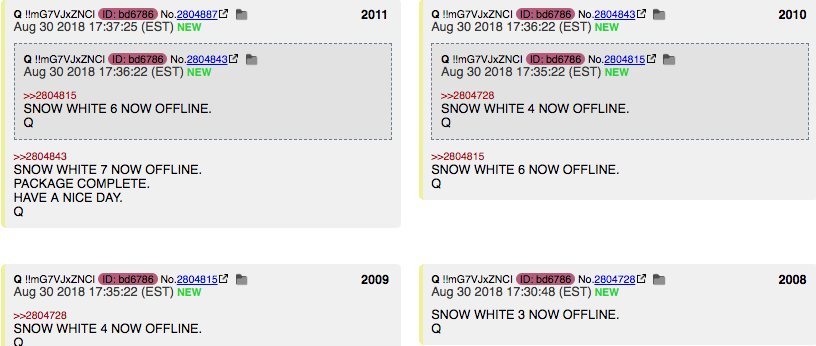
Quanta
One of the implications of quantum mechanics is that certain aspects and properties of the universe are quantized, i.e. they are composed of discrete, indivisible packets or quanta. For instance, the electrons orbiting an atom are found in specific fixed orbits and do not slide nearer or further from the nucleus as their energy levels change, but jump from one discrete quantum state to another. Even light, which we know to be a type of electromagnetic radiation which moves in waves, is also composed of quanta or particles of light called photons, so that light has aspects of both waves AND particles, and sometimes it behaves like a wave and sometimes it behaved like a particle (wave-particle duality).
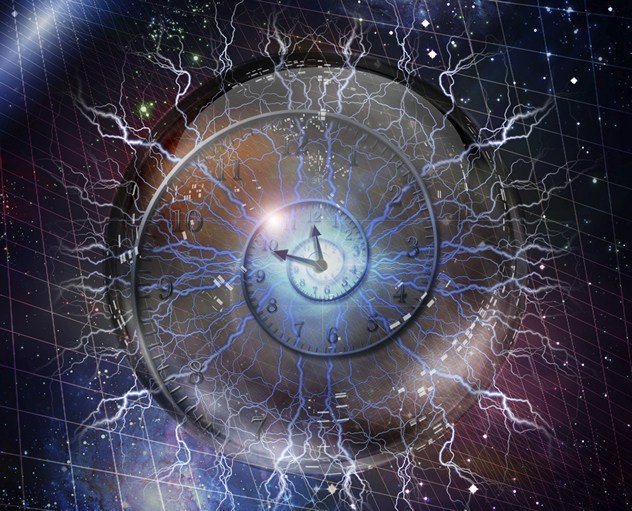
Quantum Time
Time appears to be in fact smooth and continuous (contrary to common belief, not everything in quantum theory is quantized). Tests have been carried out using sophisticated timing equipment and pulsating laser beams to observe chemical changes taking place at very small fractions of a second (down to a femtosecond, or 10−15 seconds) and at that level time certainly appears to be smooth and continuous. However, if time actually is quantized, it is likely to be at the level of Planck time (about 10-43 seconds), the smallest possible length of time according to theoretical physics, and probably forever beyond our practical measurement abilities. It should be noted that our current knowledge of physics remains incomplete, and, according to some theories that look to combine quantum mechanics and gravity into a single “theory of everything” (often referred to as quantum gravity – see below), there is a possibility that time could in fact be quantized. A hypothetical chronon unit for a proposed discrete quantum of time has been proposed, although it is not clear just how long a chronon should be.
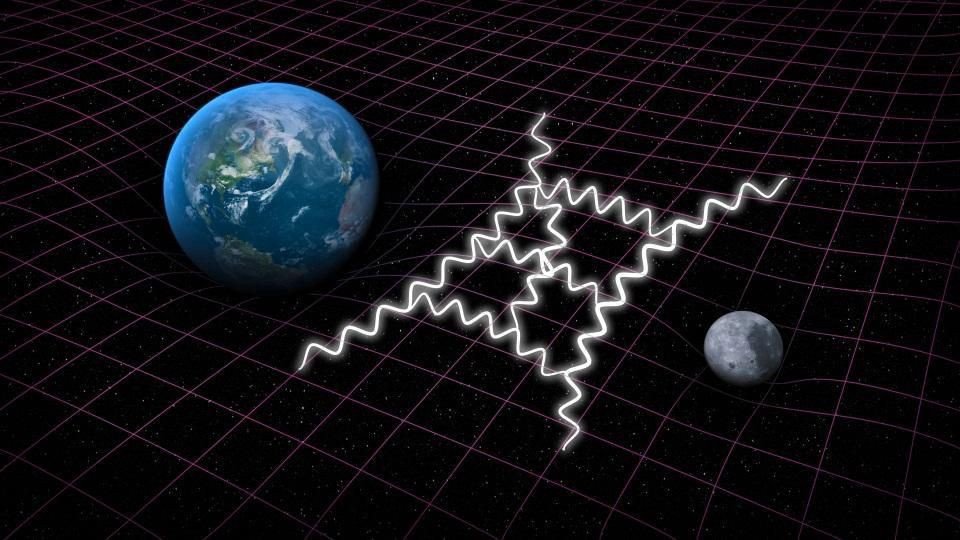
Quantum Gravity
Quantum gravity, or the quantum theory of gravity, refers to various attempts to combine our two best models of the physics of the universe, quantum mechanics and general relativity, into a workable whole. It looks to describe the force of gravity according to the principles of quantum mechanics, and represents an essential step towards the holy grail of physics, a so-called “theory of everything”. Quantum theory and relativity, while coexisting happily in most respects, appear to be fundamentally incompatible at unapproachable events like the singularities in black holes and the Big Bang itself, and it is believed by many that some synthesis of the two theories is essential in acquiring a real handle on the fundamental nature of time itself. Many different approaches to the riddle of quantum gravity have been proposed over the years, ranging from string theory and superstring theory to M-theory and brane theory, supergravity, loop quantum gravity, etc. This is the cutting edge of modern physics, and if a breakthrough were to occur it would likely be as revolutionary and paradigm-breaking as relativity was in 1905, and could completely change our understanding of time. Any theory of quantum gravity has to deal with the inherent incompatibilities of quantum theory and relativity, not the least of which is the so-called “problem of time” – that time is taken to have a different meaning in quantum mechanics and general relativity. This is perhaps best exemplified by the Wheeler-DeWitt equation, devised by John Wheeler and Bruce DeWitt back in the 1970s. Their attempt to unify relativity and quantum mechanics resulted in time essentially disappearing completely from their equations, suggesting that time does not exist at all and that, at its most fundamental level, the universe is timeless. In response to the Wheeler-DeWitt equation, some have concluded that time is a kind of fictitious variable in physics, and that we are perhaps confusing the measurement of different physical variables with the actual existence of something we call time.
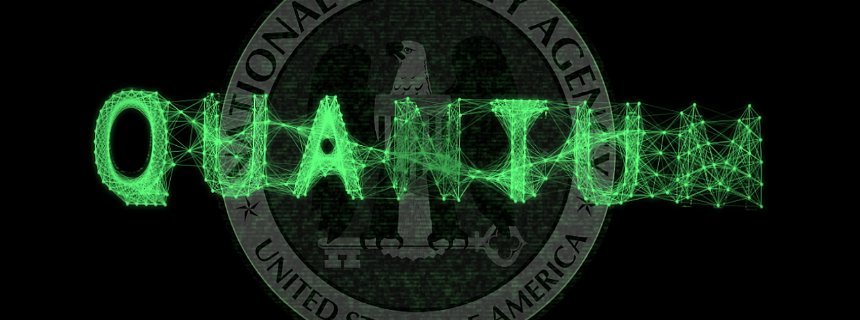
Quantum NSA
Teaching machines to read natural language documents remains an elusive challenge. Machine reading systems can be tested on their ability to answer questions posed on the contents of documents that they have seen, but until now large scale training and test datasets have been missing for this type of evaluation. In this work we define a new methodology that resolves this bottleneck and provides large scale supervised reading comprehension data. This allows us to develop a class of attention based deep neural networks that learn to read real documents and answer complex questions with minimal prior knowledge of language structure. https://leaksource.wordpress.com/2013/12/30/nsa-quantum-files/
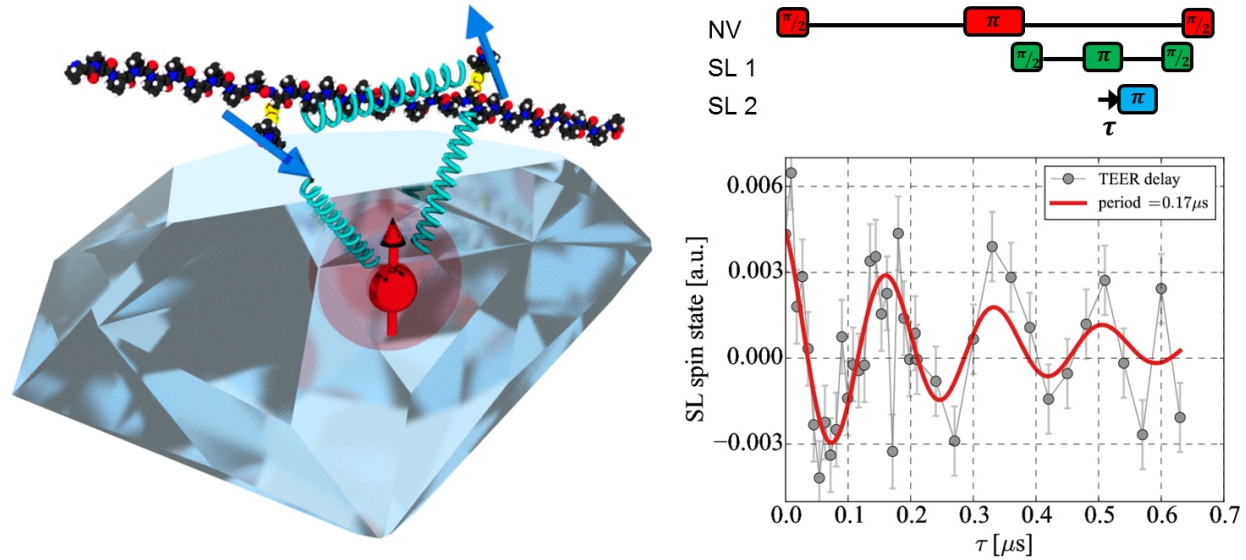
Unprecedented Quantum Sensitivity
Quantum sensors may soon be able to detect subatomic interactions inside the cells in your body, when shallow defects align, diamonds shine for unprecedented quantum sensitivity. Imagine a sensor so sensitive it can detect changes in the proton concentration of a single protein, within a single cell. This level of insight would reveal elusive quantum scale dynamics of that protein's function, potentially even in real time, but demands a sensor with controllable features at a similar scale. An international team has developed a ground-breaking single-electron "pump". The electron pump device developed by the researchers can produce one billion electrons per second and uses quantum mechanics to control them one-by-one. And it's so precise they have been able to use this device to measure the limitations of current electronics equipment.
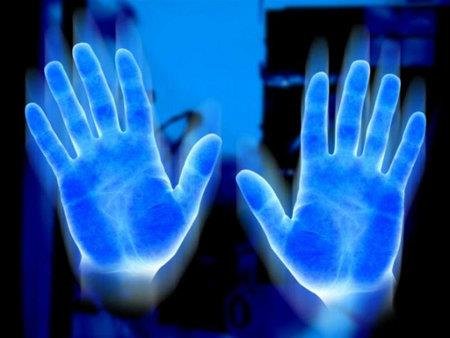
Informational healing
Receiving an "idea" regarding how to change. The difficulty and long path of "informational healing" is that it is an attempt to create a new life direction without addressing deep subconscious wounding. You may have heard the expression "It just doesn't sink in". That expression is the exact truth, because the information you are receiving at the cognitive mind level does not have the ability to communicate with your subconscious, where almost all of our patterns are playing out. It is the energy of e-motion (energy in motion) that creates our thought patterns, fear and associated behaviour. There is so much pain and fear in the subconscious blocking where this new "idea" needs to penetrate and be embodied, there is simply no "space" for the new and healthier information to enter and take hold. Informational healing can work for aspects of our life that are not crucial issues for us, as there is very little subconscious fear, pain and resistance (e-motion) inside us attached to those particular topics. Informational healing is mostly ineffective for profound emotional wounding, which of course is what being abused creates. In fact, your level of consciousness (thinking) is only ever a match on any particular topic in relation to your trauma or otherwise on that topic.
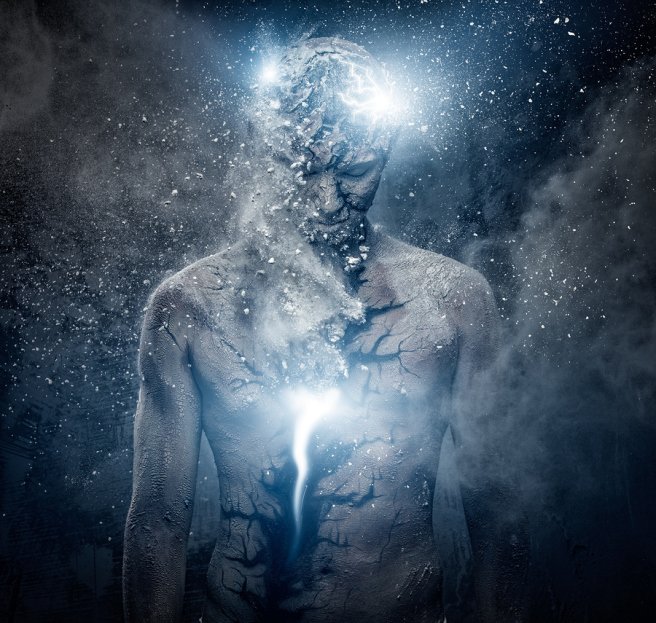
What is Divine Embodiment?
Explores the meaning of divine embodiment in representative theological writings from the Hindu and Christian traditions. It shows how some Hindu and Christian theologians favor a more literal understanding of embodiment, while others prefer symbolic interpretations. It has been limited by knowledge of later developments in Christian theology.

Quanta Freedom Healing?
A healing system has revolutionised how we can heal from narcissistic abuse. The reason it is so effective is because a victim of narcissistic abuse is no longer left with the battle of trying to manage their abuse symptoms – such as anxiety, depression, Complicated Post Traumatic Stress Disorder, adrenal fatigue and agoraphobia (as well as other emotional, mental, physical and nervous system disorders) – but rather can internally cellularly release the trauma responsible for these symptoms. This generates healing that transcends mere "survivor" recoveries by creating "Thriver" recoveries, whereby the individual is more empowered, whole, confident and joyful than they have ever been, even before being narcissistically abused. This profound healing process has transformed my life, and thousands of other people's lives, from more than 80 different countries world-wide – beyond description – in time frames and direct ways that contemporary healing simply can’t create.
How to Quanta Freedom Heal?
This is meditation, Formative and Quantum Psychology, regressions, Miracles, transpersonal hypnotherapy, Bioenergetics, psychoneuroimmunology, etc). It is this integrated approach we use that helps one dissolve the negative effects of trauma, pain, loss, failure upset, overwhelm, and improper education that causes one present stress, limitation, illness or problems. Inner consciousness (also known as the unconscious mind) and Super consciousness (spiritual/divine consciousness) unfold as you reach deeper and more expansive states in your meditation practice and self discovery processes. Enhanced intuition, expanded mental capacity, divine connections, greater physical health and well being as well as increased abilities of living, more joy, satisfaction and fulfillment in all aspects of your life are the benefits as you rise to higher levels on this path to freedom. The body, mind, intellect, ego, emotions and spiritual Self are interconnected through a complex energy system of resonant fields of consciousness and energy. They are connected by contrasting energies of mental, emotional, physiological and spiritual energies that hold the personal history of your life and like a programmed computer dictate the thinking, emotions, and physical efforts you are impulsed to undertake. It is by your accessing these impulses and memories through the different processes used that allow programmed influences to be modified, corrected, or deleted to obtain more optimum mental, emotional, physical and spiritual health.
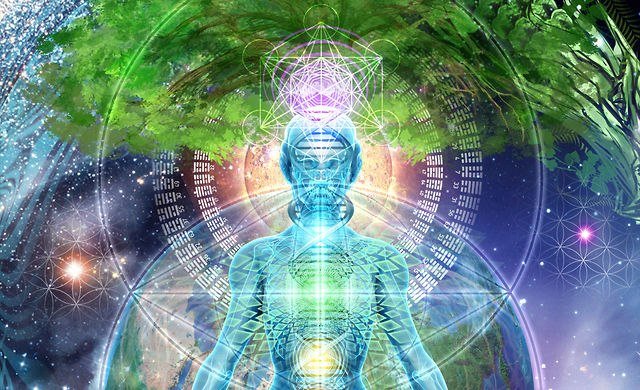
What is Super Conscious?
In other words Source / Life / God – a Higher Infinite Intelligence / Consciousness which has unlimited potential to heal what the cognitive mind simply can’t, as well as free us into understandings, potential and emotional freedom which far exceed our previous "normal identity".
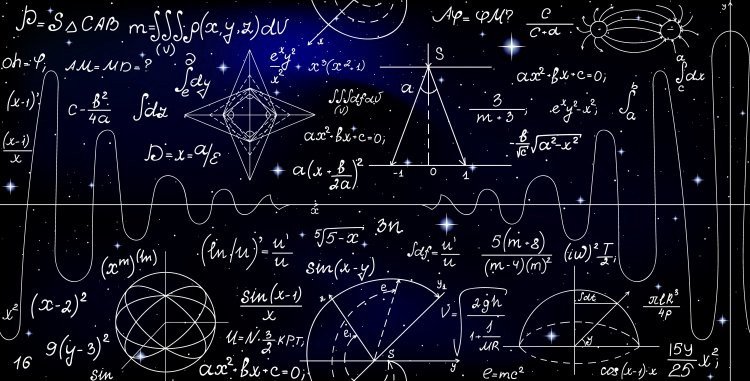
How will Quantum will change healthcare
Quantum Computing will disrupt the healthcare industry because Quantum Computers use phenomenons called superposition and entanglement to create qubits with special computational power determined by the laws of quantum mechanics. Qubits are unlike binary bits, superposition allows them to be in a state of 0’s AND 1. Think of it as being in all positions at the same time between 0 and 1. Every additional qubit increases the power by 2^n so now calculate how much computational power you can have with 50 qubits (2⁵⁰). Entangled qubits are even more strange, they can be in a system where all qubits are interconnected (which is extremely hard to do) without any tangible force between them. If one qubit is measured then it directly affects all other entangled qubits. Measuring one qubit will automatically reveal the outcome of its entangled pair which means for one qubit measured you have 2 qubits worth of information. This is a huge breakthrough for the pharmaceutical industry, imagine curing cancer for good and having the solution for every possible disease in an instant.Fundamentally Nature is quantum mechanical on the most basic molecular level thus using a quantum computer to solve such problems will be the most optimal.
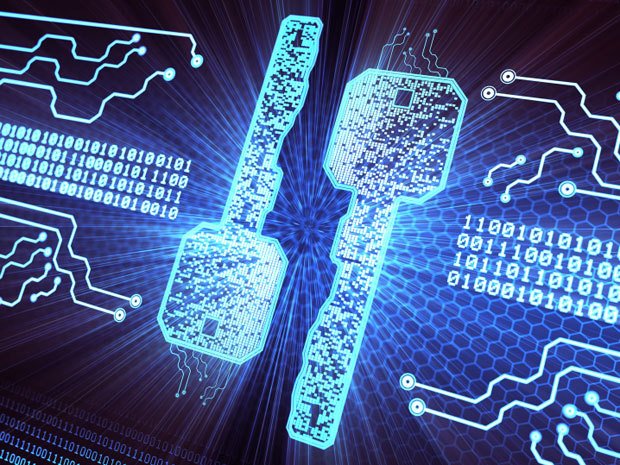
Quantum Cryptography Beyond Quantum Key Distribution
Quantum cryptography is the art and science of exploiting quantum mechanical effects in order to perform cryptographic tasks. While the most well-known example of this discipline is quantum key distribution (QKD), there exist many other applications such as quantum money, randomness generation, secure two- and multi-party computation and delegated quantum computation. Quantum cryptography also studies the limitations and challenges resulting from quantum adversaries---including the impossibility of quantum bit commitment, the difficulty of quantum rewinding and the definition of quantum security models for classical primitives. In this review article, aimed primarily at cryptographers unfamiliar with the quantum world, we survey the area of theoretical quantum cryptography, with an emphasis on the constructions and limitations beyond the realm of QKD. https://arxiv.org/abs/1510.06120
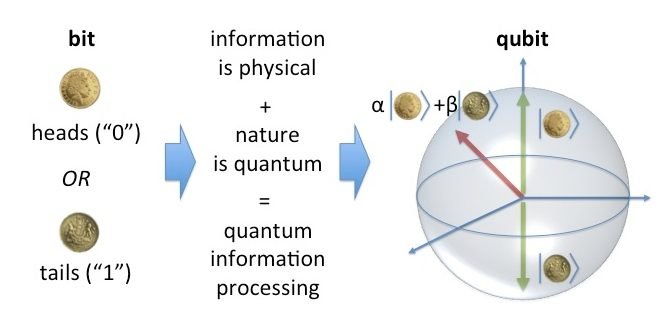
Quantum information
Quantum information technologies, and intelligent learning systems, are both emergent technologies that will likely have a transforming impact on our society. The respective underlying fields of research -- quantum information (QI) versus machine learning (ML) and artificial intelligence (AI) -- have their own specific challenges, which have hitherto been investigated largely independently. However, in a growing body of recent work, researchers have been probing the question to what extent these fields can learn and benefit from each other. QML explores the interaction between quantum computing and ML, investigating how results and techniques from one field can be used to solve the problems of the other. Recently, we have witnessed breakthroughs in both directions of influence. For instance, quantum computing is finding a vital application in providing speed-ups in ML, critical in our "big data" world. Conversely, ML already permeates cutting-edge technologies, and may become instrumental in advanced quantum technologies. Aside from quantum speed-up in data analysis, or classical ML optimization used in quantum experiments, quantum enhancements have also been demonstrated for interactive learning, highlighting the potential of quantum-enhanced learning agents. Finally, works exploring the use of AI for the very design of quantum experiments, and for performing parts of genuine research autonomously, have reported their first successes. Beyond the topics of mutual enhancement, researchers have also broached the fundamental issue of quantum generalizations of ML/AI concepts. This deals with questions of the very meaning of learning and intelligence in a world that is described by quantum mechanics. In this review, we describe the main ideas, recent developments, and progress in a broad spectrum of research investigating machine learning and artificial intelligence in the quantum domain.
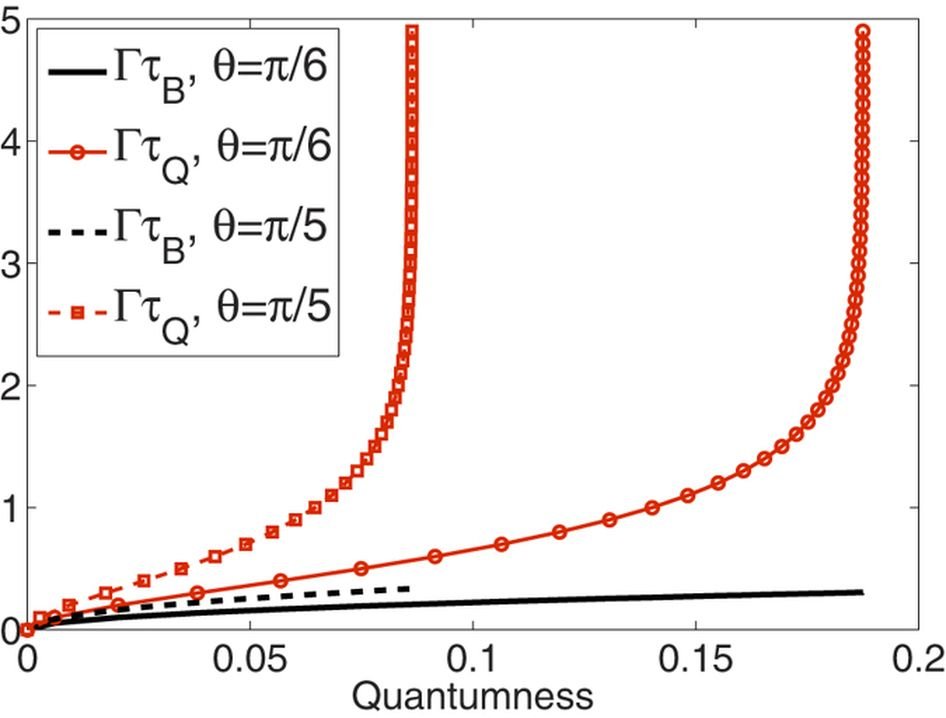
What is quantumness?
A common misconception in quantum information is that the "power" of quantum computing comes from the fact that the wave function is represented by an exponential (in the number of qubits) number of coefficients. Although the latter statement is certainly true, it is nevertheless not the main ingredient for quantum speedup. As a counter-example, imagine a classical probabilistic theory (sometimes also called a fuzzy-logic theory), e.g., a system consisting of n (classical) bits b1,b2,…,bn, where each state of the system can occur with the corresponding probability pi1…in, with i1,i2,…,in?{0,1}. It is now obvious that to specify the complete state of such system one needs the values of pi1…in for every possible i1,i2,…,in?{0,1}, i.e., 2n real coefficients, which is the same as the number of coefficients required in the quantum case. The only major difference is that in the classical probabilistic theories the coefficients are real and they must transform according to a stochastic evolution, whereas in the quantum case the coefficients are complex and the allowed transformations are unitary. Or, more technically, a classical probabilistic theory is described by an L1 space over the reals, whereas quantum mechanics is described by an L2 space over the complex numbers. The mere fact that in the quantum case the coefficients can be complex has a profound implication: it means that during the evolution, amplitudes can interfere. Good quantum algorithms exploit this fact to the maximum: the "desired" amplitudes interfere constructively, whereas the ones that correspond to non-solutions interfere destructively. Due to the fact that the total probability must be conserved, this results in a "boost" of the amplitudes that correspond to a solution, which can happen (much) faster than in the classical case. Therefore, what makes quantum computer "tick" is not the fact that “Hilbert space is a big space" (Carlton Caves), but rather the intrinsic structure of the L2 space over complex numbers. L1 over reals is an equally big place, but way more boring… Of course, L1 is not a Hilbert space. In fact, the only Lp space that is also a Hilbert space is L2.
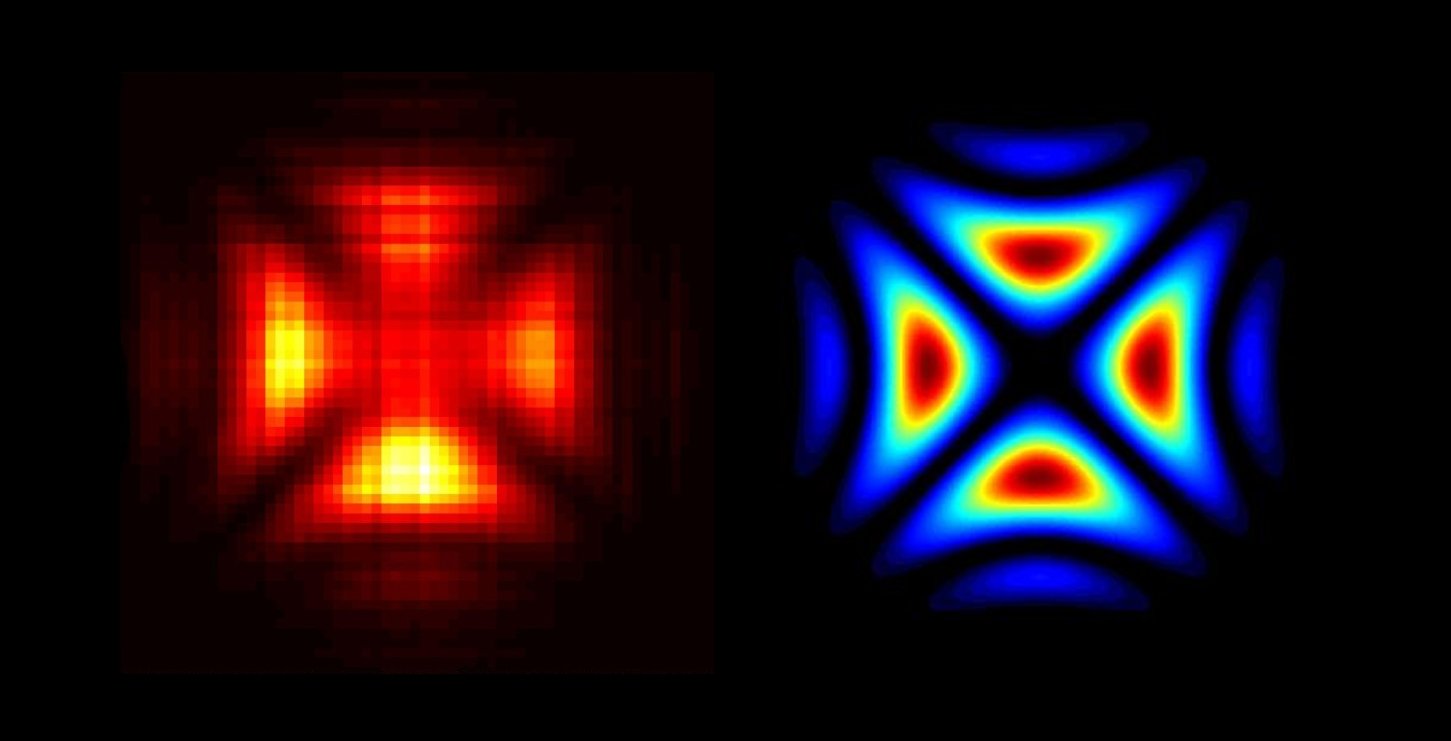
Quantum Hologram
Quantum emissions from all physical objects of macroscopic size, molecular and above, emits quanta of energy and absorbs quanta of energy. The quanta emitted from every object we've discovered carries information about the physical. The quantum hologram is this informational structure about a physical object and it is non-local, which means it is not space-time restricted. It appears to be a proper mechanism for explaining virtually all of these types of psychic manifestation that we humans know. We are now beginning to understand what consciousness is, and what we understand so far is that the quantum holographic record survives. It is our history, it records our passage, it records what we do, and it's available to the future. It appears to be nature's way of preserving our experience; that's the non-local part. It's the informational part of us, so that everything we do as physical beings is recorded in the ephemeral quantum holographic record, the giant hard disc in the sky, if you will. In other words, the quantum hologram is the latest version of the Akashic record: an imaginary record of everything that's ever happened or will happen, allegedly accessible by psychic means.
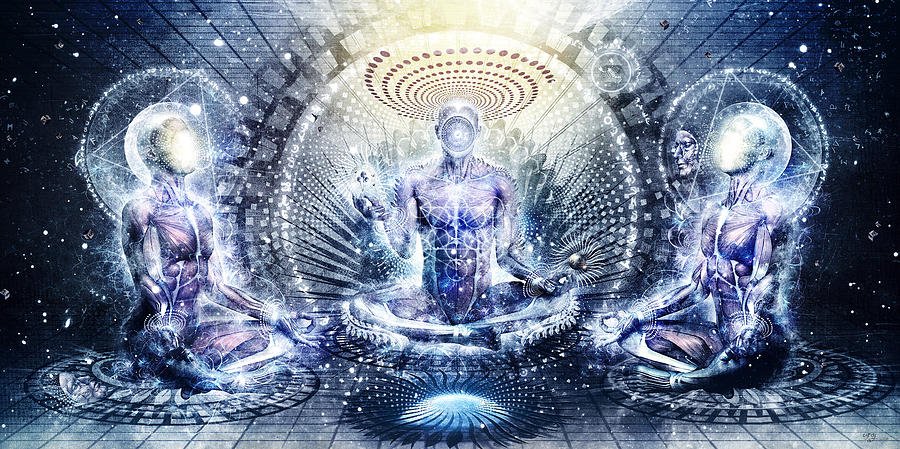
Morphic resonance
(MR) is put forth as if it were an empirical term, but it is no more empirical than L. Ron Hubbard's 'engram', the alleged source of all mental and physical illness. The term is more on par with the Stoic's notion of the logos. Bergson's notion of the élan vital, or Plato's notion of the eidos than it is with any scientific notion of the laws of nature. What the rest of the scientific world terms lawfulness--the tendency of things to follow patterns we call laws of nature--Sheldrake calls morphic resonance. He describes it as a kind of memory in things determined not by their inherent natures, but by repetition. He also describes MR as something which is transmitted via "morphogenetic fields." This gives him a conceptual framework wherein information is transmitted mysteriously and miraculously through any amount of space and time without loss of energy, and presumably without loss or change of content through something like mutation in DNA replication. Thus, room is made for psychical as well as physical transmission of information. Thus, it is not at all necessary for us to assume that the physical characteristics of organisms are contained inside the genes, which may in fact be analogous to transistors tuned in to the proper frequencies for translating invisible information into visible form. Thus, morphogenetic fields are located invisibly in and around organisms, and may account for such hitherto unexplainable phenomena as the regeneration of severed limbs by worms and salamanders, phantom limbs, the holographic properties of memory, telepathy, and the increasing ease with which new skills are learned as greater quantities of a population acquire them. While this metaphysical proposition does seem to make room for telepathy, it does so at the expense of ignoring Occam's razor. Telepathy and such things as phantom limbs, for example, can be explained without adding the metaphysical baggage of morphic resonance. So can memory, which does not require a holographic paradigm, by the way. The notion that new skills are learned with increasing ease as greater quantities of a population acquire them, known as the hundredth monkey phenomenon, is bogus.
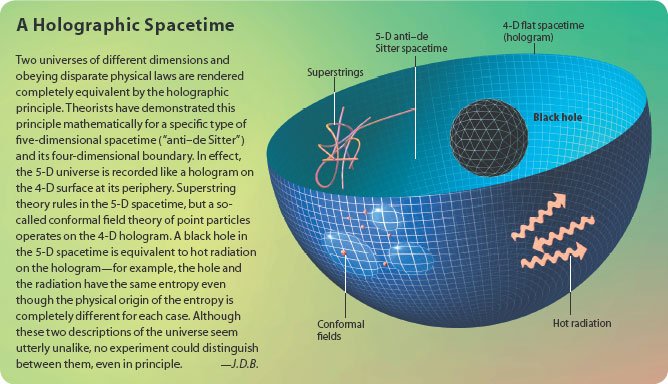
Holographic principle
A principle of string theories and a supposed property of quantum gravity that states that the description of a volume of space can be thought of as encoded on a lower-dimensional boundary to the region—preferably a light-like boundary like a gravitational horizon. The holographic principle was inspired by black hole thermodynamics, which conjectures that the maximal entropy in any region scales with the radius squared, and not cubed as might be expected. In the case of a black hole, the insight was that the informational content of all the objects that have fallen into the hole might be entirely contained in surface fluctuations of the event horizon. The holographic principle resolves the black hole information paradox within the framework of string theory. However, there exist classical solutions to the Einstein equations that allow values of the entropy larger than those allowed by an area law, hence in principle larger than those of a black hole. These are the so-called "Wheeler's bags of gold". The existence of such solutions conflicts with the holographic interpretation, and their effects in a quantum theory of gravity including the holographic principle are not yet fully understood.
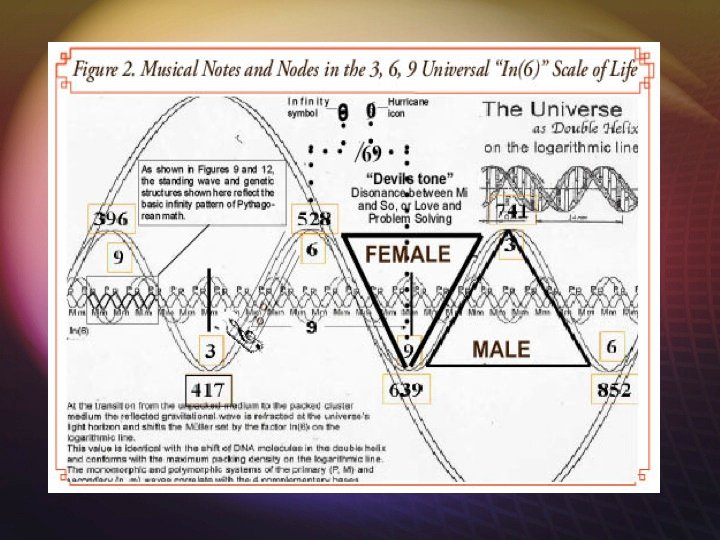
Quantum Idealism
In current mainstream scientific thinking, and in cognitive science and consciousness studies in particular, there is something called the "hard problem." This problem is how to explain what we know intimately and experientially as our own selfaware consciousness and all its "qualia" only in terms of its completely physical origins of bioelectrical and chemical matter and energy interactions at the neuronal level in the brain. Nobody has yet been able to successfully solve this 'hard problem'. If, however, the picture is inverted, then the new hard problem to be faced by any idealist viewpoint would be trying to explain how all things spatiotemporal and completely matterand-energy physical in nature can be derived solely from an all-constituting underlying reality that is pure consciousness (and spirit), which might eventually turn out to be more fruitful root.
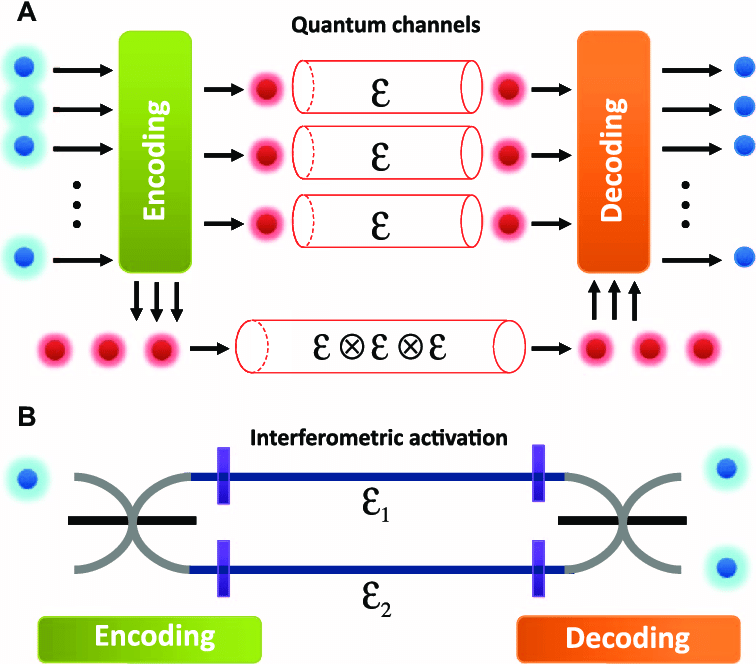
Quantum channel
A quantum communication channel can transmit quantum information, as well as classical information. An example of quantum information is the state of a qubit. An example of classical information is a text document transmitted over the Internet. More formally, quantum channels are completely positive (CP) trace-preserving maps between spaces of operators. In other words, a quantum channel is just a quantum operation viewed not merely as the reduced dynamics of a system but as a pipeline intended to carry quantum information. Some authors use the term "quantum operation" to also include trace-decreasing maps while reserving "quantum channel" for strictly trace-preserving maps.
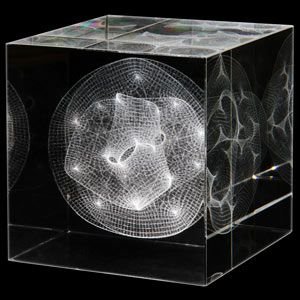
Quantum Dimensions
It is in the universal form restricted one-instanton partition function of supersymmetric Yang–Mills theory. It is based on the derivation of universal expressions for quantum dimensions (universal characters) of Cartan powers of adjoint and some other series of irreps of simple Lie algebras. These formulae also provide a proof of formulae for universal quantum dimensions for low-dimensional representations, needed in derivation of universal knot polynomials (colored Wilson averages of Chern–Simons theory on 3d sphere). As a check of the (complicated) formulae for universal quantum dimensions we prove numerically Deligne's hypothesis on universal characters for symmetric cube of adjoint representation.
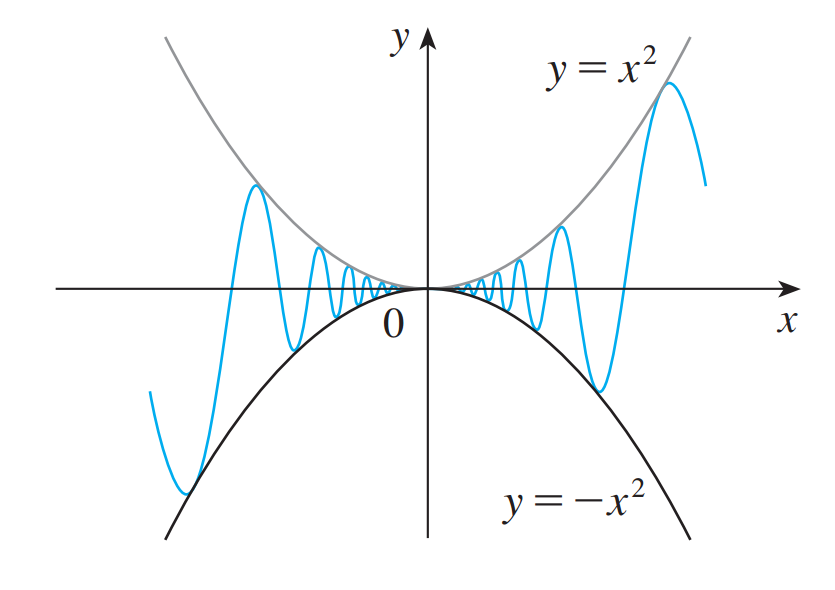
Squeeze theorem
In calculus, the squeeze theorem, also known as the pinching theorem, the sandwich theorem, the sandwich rule, and sometimes the squeeze lemma, is a theorem regarding the limit of a function. The squeeze theorem is used in calculus and mathematical analysis.
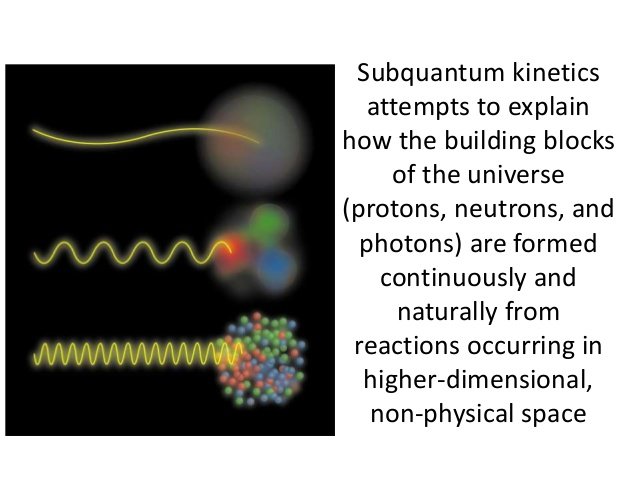
Subquantum
Physics describing any of several approaches to describe physical phenomena by means of hidden variables or other alternatives to quantum physics.
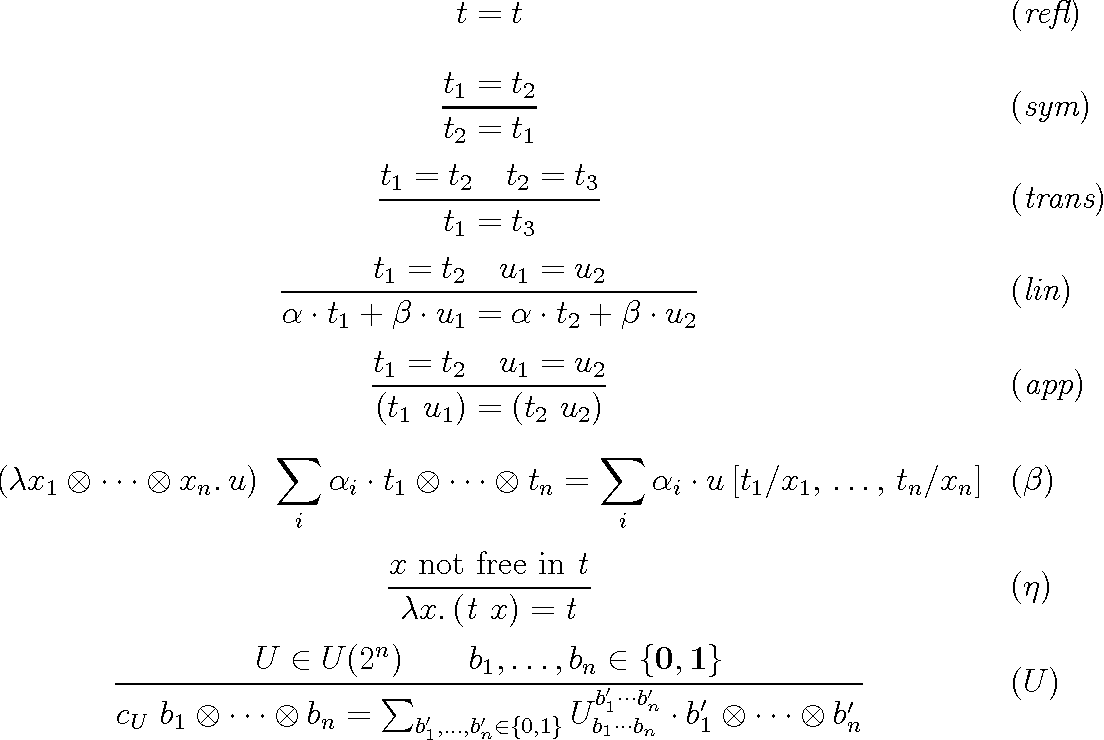
Quantum Semantics
The quantum semantics can be naturally applied to a formal analysis of musical compositions, where both musical ideas and extra-musical meanings are characterized by some essentially vague and ambiguous features. Quantum computational logics represent a suitable abstract environment for modelling semantic situations where vagueness and ambiguity play a relevant role. In this framework vague possible worlds can be described as a kind of abstract scenes, where individual concepts, relational concepts and events behave as quantum-like superpositions that ambiguously allude to a number of possibly antagonistic alternatives.
QHTC
QHTC is a model that describes the basis for consciousness, explains how living organisms know and use information, and how the role of information in nature maintains the same fundamental status as that of matter and energy. More specifically, the QHTC considers consciousness an essential component of the universe, and that all matter possesses subjective characteristics of consciousness (i.e., the foundation of everything). The QHTC, which considers consciousness as non-local in the same way that quantum objects behave in a non-local manner, has potential significant implications for understanding anomalous events associated with the “contact modalities”. In fact, physicist Claude Swanson’s proposed Synchronized Universe Model (S.U.M) attempts to explain how contact modalities are interrelated under ZPE quantum fields which serve as the foundation for human consciousness. Collectively, the S.U.M and QHTC have the potential to help explain many of the phenomena traditionally associated with NHI based experiences that are inconsistent with traditional scientific principles (consciousness and the nature of reality).
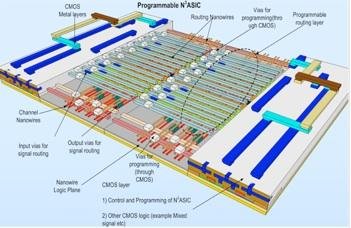
(ASIC)
Application-Specific Integrated Circuits (ASICs), rather than a general-purpose CPU. They are hardwired to implement a limited class of quantum algorithms. More advanced quantum devices can be programmed to run simple quantum circuits, which makes them more similar to Field-Programmable Gate Arrays (FPGAs), integrated circuits that are programmed using a low-level, hardware-specific Hardware Description Language. In both cases, an intimate knowledge of the hardware design and limitations is needed to run effective algorithms.
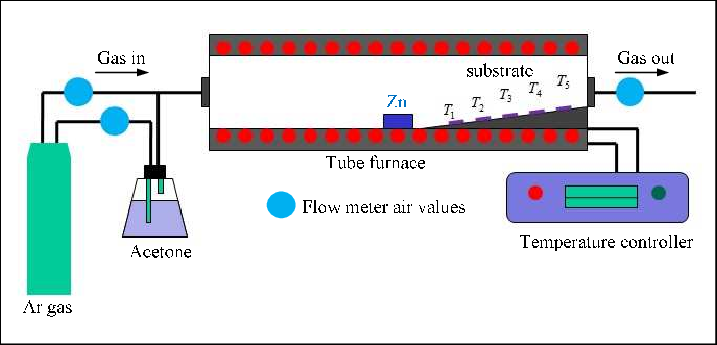
(CVD)
Chemical vapor deposition (CVD) and directional polishing to control how the NVs form in the lattice. For their diamond substrate, which has a commonly aligned surface, where the lattice is oriented along the same crystollagraphic plane (called 111 in this case), Ishiwata and his colleagues achieved ensembles of NVs all with the same orientation. For a substrate measuring about 10 microns across, just less than the width of a human hair, their method can produce somewhere around 10,000 such centers within 10 nanometers from surface.

NVs
Same respective locations of their crystal units and so close to the surface, the group could conduct nanoscale NMR detection of the fluorine in oil making contact with the substrate. The reliability of their fabrication method has (literally) far reaching applications for wide field measurements, ensuring the high contrast detection over relatively large sample areas.
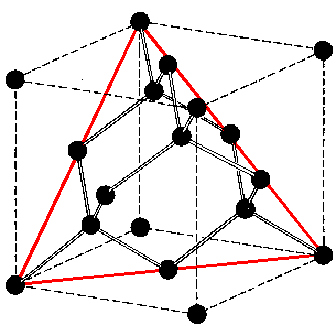
(111)
Perfectly aligned, high-density, shallow nitrogen vacancy (NV) centers on the (111) surface of a diamond. The study involved step-flow growth with a high flux of nitrogen during chemical vapor deposition (CVD) growth, which resulted in the formation of a highly concentrated (>1019 cm−3) nitrogen layer approximately 10 nm away from the substrate surface. Photon counts obtained from the NV centers indicated the presence of 6.1 × 1015–3.1 × 1016 cm−3 NV centers, which suggested the formation of an ensemble of NV centers. The optically detected magnetic resonance (ODMR) spectrum confirmed perfect alignment (more than 99%) for all the samples fabricated by step-flow growth via CVD. Perfectly aligned shallow ensemble NV centers indicated a high Rabi contrast of approximately 30% which is comparable to the values reported for a single NV center. Nanoscale nuclear magnetic resonance demonstrated surface-sensitive nuclear spin detection and provided a confirmation of the NV centers' depth. Single NV center approximation indicated that the depth of the NV centers was approximately 9–10.7 nm from the surface with error of less than ±0.8 nm. Thus, a route for material control of shallow NV centers has been developed by step-flow growth using a CVD system. Our finding pioneers on the atomic level control of NV center alignment for large area quantum magnetometry.
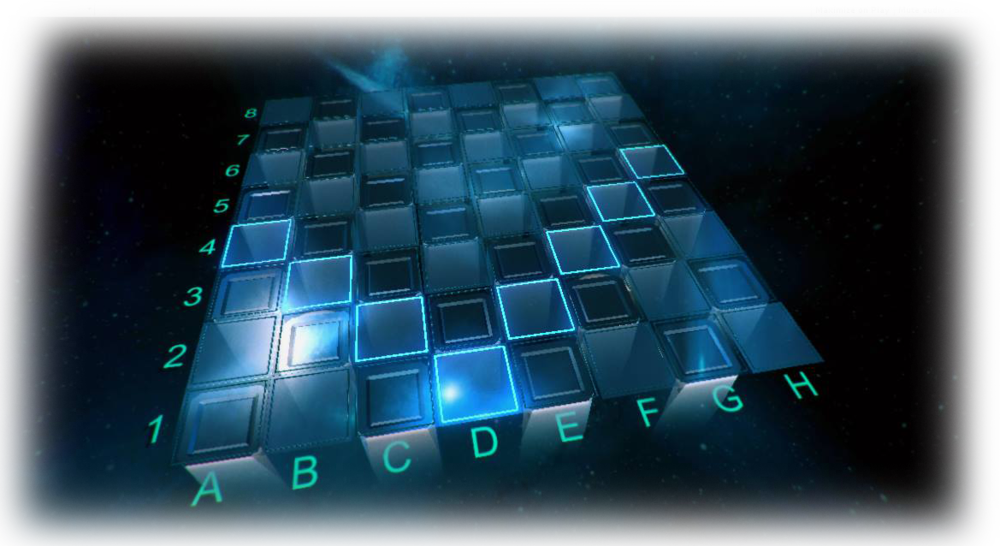
Quantum Chess
Quantum Chess, a variant of the chess game invented by Selim Akl, uses the weird properties of quantum physics. Unlike the chess pieces of the conventional game, where a pawn is a pawn, and a rook is a rook, a quantum chess piece is a superposition of "states", each state representing a different conventional piece. In Quantum Chess, a player does not know the identity of a piece (that is, whether it is a pawn, a rook, a bishop, and so on) until the piece is selected for a move. Once a piece is selected it elects to behave as one of its constituent conventional pieces, but soon recovers its quantum state and returns to being a superposition of two or more pieces. Conventional chess is a game of complete information, and thanks to their raw power and clever algorithms, computers reign supreme when pitted against human players. The idea behind Quantum Chess is to introduce an element of unpredictability into chess, and thereby place the computer and the human on a more equal footing. Because a true quantum board may be a few years in the future, for her summer project, Alice Wismath, an undergraduate in the School of Computing, and a summer NSERC student working with Dr. Akl, created a program to model one variation of Quantum Chess, as well as a computer strategy to play the game.
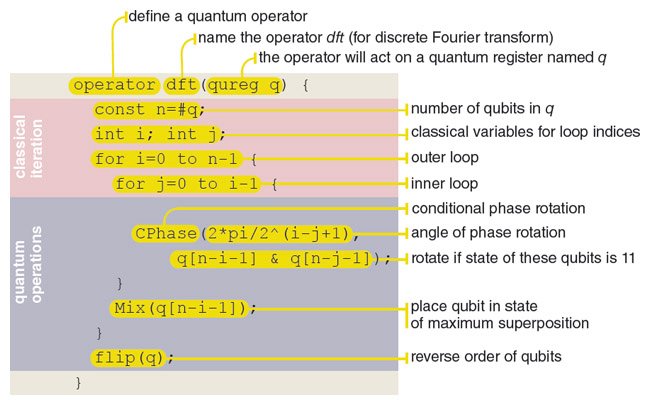
Imperative Quantum Programming Languages
Quantum imperative language (QIL), to analyse quantum entanglement. As mentioned in a previous section, analysis of quantum entanglement. The earliest proposed quantum programming languages followed the imperative programming paradigm. This line of languages was started by Knill , who gave a set of conventions for writing quantum algorithms in pseudo-code. While Knill’s proposal was not very formal, it was very influential in the design of later imperative quantum programming languages. More complete imperative languages were defined by Omer , Sanders and Zuliani , and Bettelliet al. A common feature of these imperative quantum programming languages is that a program is viewed as a sequence of operations which operate by updating some global state. These languages can be directly compiled onto or interpreted in the QRAM virtual hardware model. Quantum states in this paradigm are typically realized as arrays of qubits, and run-time checks are needed to detect certain error conditions. For instance, out-of-bounds checks are necessary for array accesses, and distinctness checks must be used to ensure i = j when applying a binary quantum operation to two qubits i and j. As is typical for imperative programming languages, the type system of these languages is not rich enough to allow all such checks to be performed at compile-time. Also,typically these languages do not have a formal semantics, with the exception of Sanders and Zuliani’s language, which possesses an operational semantics.The various languages in this category each offer a set of advanced programming features. For instance, ¨Omer’s language QCL contains such features as, automatic scratch space management, and a rich language for describing user-defined operators. It also offers some higher-order operations such as computing the inverse of a user-defined operator. The language of Bettelli et al. emphasizes practicality. It is conceived as an extension of C++, and it treats quantum operators as first-class objects which can be explicitly constructed and manipulated at run-time. One of the most powerful features of this language is the on-the-fly optimization of quantum operators, which is performed at run-time.Finally, Sanders and Zuliani’s language qGCL is of a somewhat different flavor. Based on Dijkstra’s guarded command language, qGCL is as much a specification language as a programming language, and it supports a mechanism of step wise refinement which can be used to systematically derive and verify programs.

Quantum Magnetic Resonance Analyzer
It works on the principle of quantum medicine, it collects the weak magnetic field of human cells and then analyze them and determine a person's health status and problems, putting them forward with standard prevention recommendations. Quantum Resistance theory is similar with that of radio as there are wireless waves in air, but if you want to listen to a specific broadcasting station then you need to modulate the radio to same frequency which is causing the resonance and then only radio can get the specific broadcasting channel. Quantum Resistance works on the same principle.The person just has to hold the sensor with a straight arm and then in under two minutes the machine will collect the magnetic field and thus transferring it to a program which is compatible with Windows and then generating a 41 test report. It's fast and not invasive.
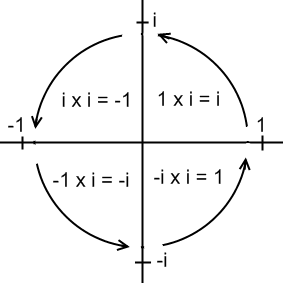
Imaginary time
Although rather difficult to visualize, imaginary time is not imaginary in the sense of being unreal or made-up. Rather, it bears a similar relationship to normal physical time as the imaginary number scale does to the real numbers in the complex plane, and can perhaps best be portrayed as an axis running perpendicular to that of regular time. It provides a way of looking at the time dimension as if it were a dimension of space, so that it is possible to move forwards and backwards along it, just as one can move right and left or up and down in space. Despite its rather abstract and counter-intuitive nature, the usefulness of imaginary time arises in its ability to help mathematically to smooth out gravitational singularities in models of the universe. Normally, singularities (like those at the centre of black holes, or the Big Bang itself) pose a problem for physicists, because they are areas where the known physical laws just do not apply. When visualized in imaginary time, however, the singularity is removed and the Big Bang functions like any other point in space-time. Exactly what such a concept might represent in the real world, though, is unknown, and currently it remains little more than a potentially useful theoretical construct.
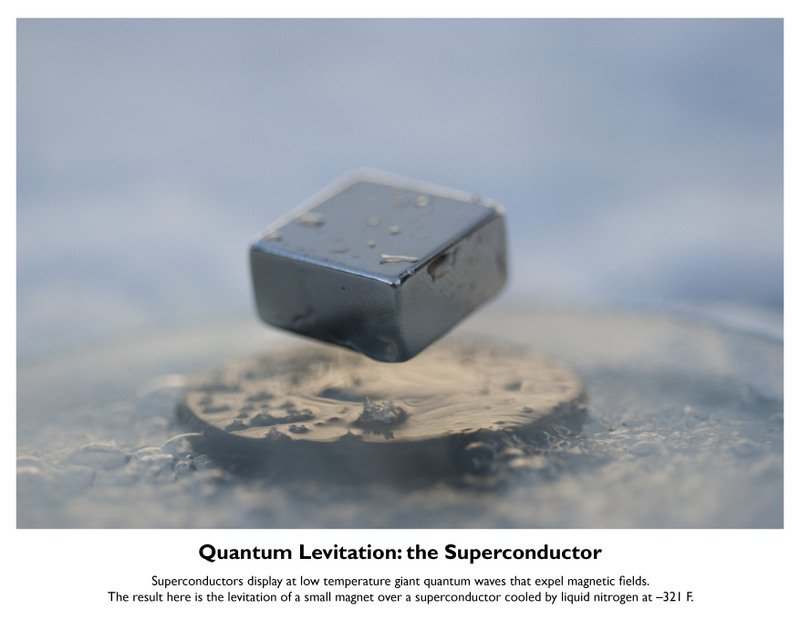
Quantum levitation
Quantum levitation as it is called is a process where scientists use the properties of quantum physics to levitate an object (specifically, a superconductor) over a magnetic source (specifically a quantum levitation track designed for this purpose).

Hundredth monkey effect
The hundredth monkey effect is a hypothetical phenomenon in which a new behavior or idea is claimed to spread rapidly by unexplained means from one group to all related groups once a critical number of members of one group exhibit the new behavior or acknowledge the new idea like Q.

Psychotropic Pills
Medications weaken the nervous system and cause brain damage as well as being addictive and toxic. Most importantly these illnesses are nothing but labels for human emotional states and imbalances which have spawned a multi-billion dollar pharmaceutical/medical industrial complex.There is no scientific evidence that any of these illnesses are caused by chemical imbalance as they are all just a hypothesis. Techniques to help children and adults wean off their psychotropic medications in conjunction with their prescribing physician, to then address the individual symptoms, identifying them and then eradicating their underlying causes. We just say nutrition basically is the lack of things and the cause for most mental problems.*
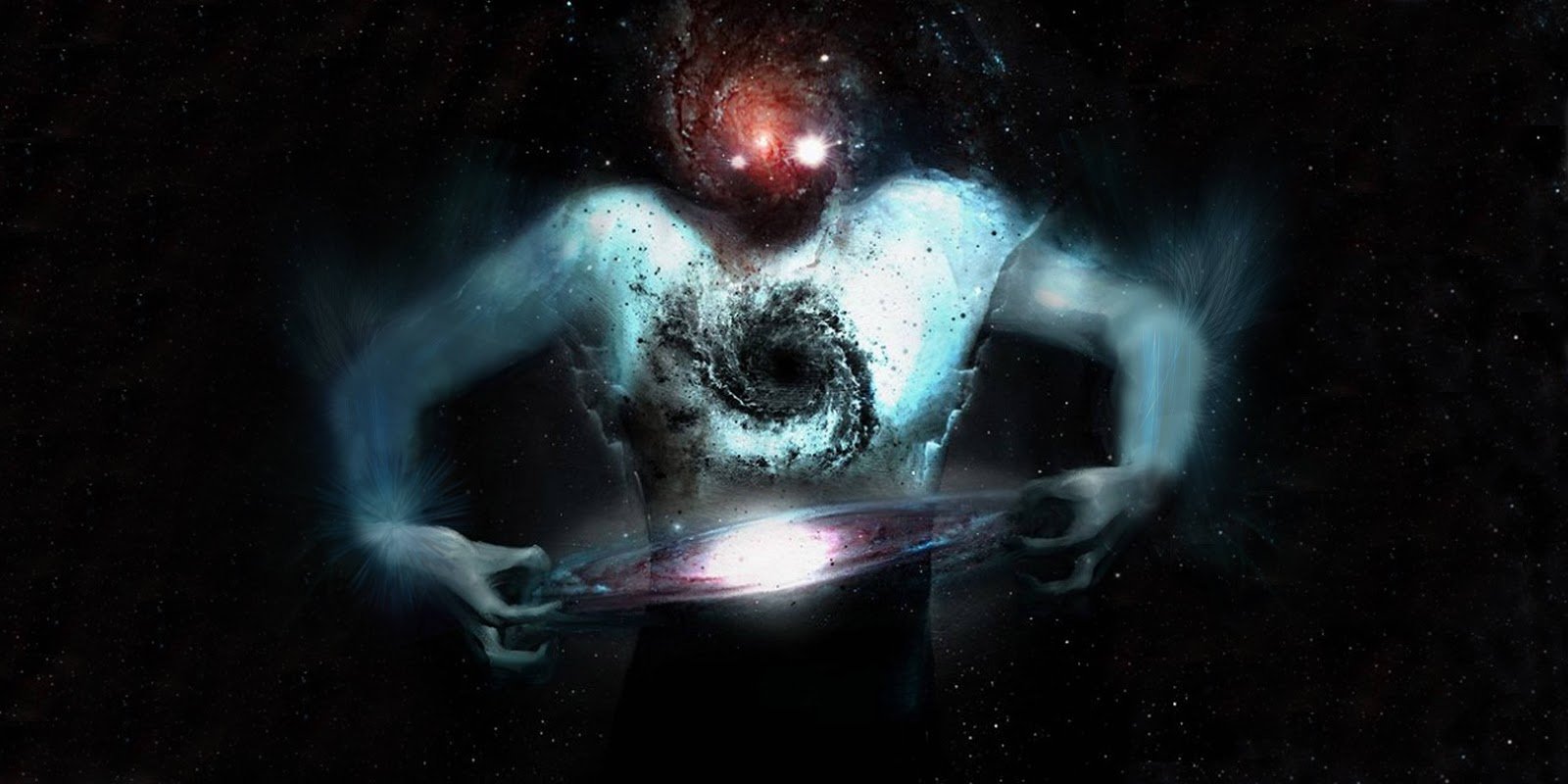
Quantum Play*
The quantum "play" would be like a divine help in our DNA because obviously it had help early off reaching where we are today. Lets think evolution is like a chess game It would take 100 times longer to reach our DNA advanced structure without any assistance and its very well far beyond random. Spirits and god could interact with the pieces as this would be light encoded and embedded and modified. These would be small improvements over time with male DNA chromosomes fixing the female DNA chromosomes. So it's like winning a game as it would take anything else in the universe without a god 100 times as long to reach our levels of complexity in the genomes.

Quantum-FEED*
100 trillion cells means every second you are regenerating 1 million cells - so the real question is what are you feeding your quantum body daily exactly?
Q = E E E (XY+XY/ZZ-$)
J DISCONNECTED....
-OFFLINE MODE ENABLED
